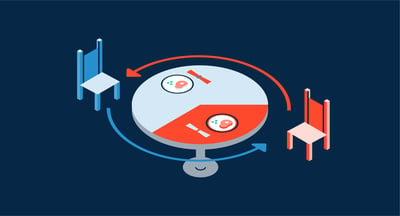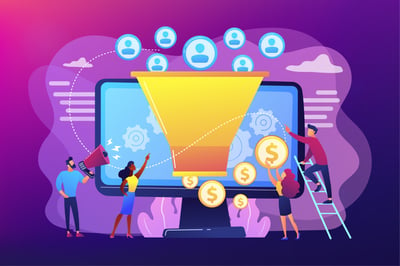May 7, 2020
 by Michelle Deery / May 7, 2020
by Michelle Deery / May 7, 2020

E-commerce CRO tactics promise a great deal, from increasing website traffic to growing profits.
But if you implement tactics that don’t deliver results, prepare for dissatisfied shoppers and a drop in sales. Low conversion rates mean your e-commerce site’s bottom line will suffer. To clarify, a conversion is when any desired action is taken by a visitor on your store’s website. The goal is to achieve a good conversion rate. It shows that your website is successful in convincing visitors to become customers.
What is a good conversion rate? WordStream’s conversion rate analysis gives an overall conversion rate of 2.35%. If your store’s figure is lower than this, you need to optimize your conversion rates.
CRO tactics are diverse and range from web development, user interface design, marketing and more. Good CRO tactics achieve a common goal: improve the performance of your website to increase your store’s revenue. The following tactics will help you do exactly that. All you need to do is implement them correctly.
Your e-commerce site’s interface and features play a major role in optimizing conversion rates. You should specifically focus on these key factors when making web development and UI design improvements.
On-site search is hugely important to your store’s success. However, according to the Baymard Institute, 70% of desktop e-commerce search implementations are unable to return relevant results for product-type synonyms.
This can cause friction for customers during their purchasing journey and reduce conversions. For example, maybe a customer is searching for a particular item but they don’t know how it’s labeled on your store. They might search for it with words and phrases that don’t match the product’s actual name or description in your catalog. This prevents your search engine from finding and displaying the item, which of course prevents the customer from making a purchase.
That’s less likely to be a problem with AI-powered smart site-search. Innovations such as natural language processing (NLP) allow your site to understand human language in the way people might describe certain types of items for which they are searching. Thus, even if they don’t use the same phrasing as a product’s description or name does, NLP can still deliver the product they were searching for.
Let’s take a look at an example from Zimmermann. When a shopper searches for the term “ankle shoe” the results delivered are very accurate, and they display different types of ankle shoes to choose from.
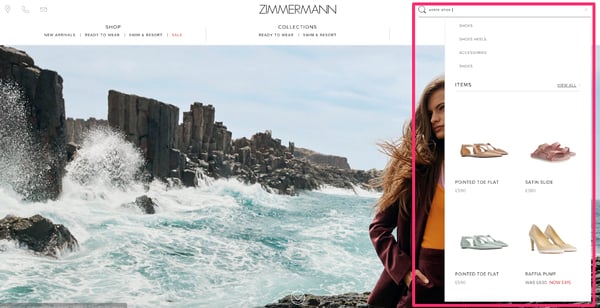
This tactic lets your customers know how long the checkout process will take and removes any unwanted surprises. You have to remember that people can be easily distracted when browsing the internet. The average amount of time people spend on individual websites is two minutes and 17 seconds.
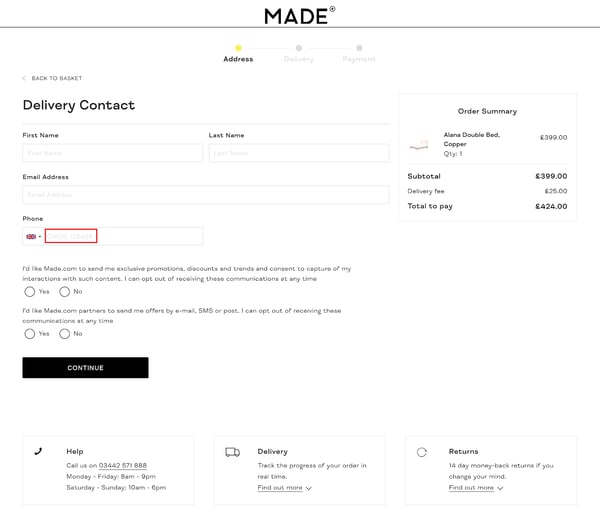
Along with a streamlined checkout, letting customers know how far along they are in the checkout process will minimize the odds of customers clicking away from your store. Be upfront with how much more time they need to spend to complete their purchase and they will stick around until the end.
Offer a guest checkout to remove any friction of purchasing items from your store. After all, not every person who browses your e-commerce store will necessarily have an account with it. Requiring users to create accounts before making purchases will discourage guests who don’t want to spend time doing so.
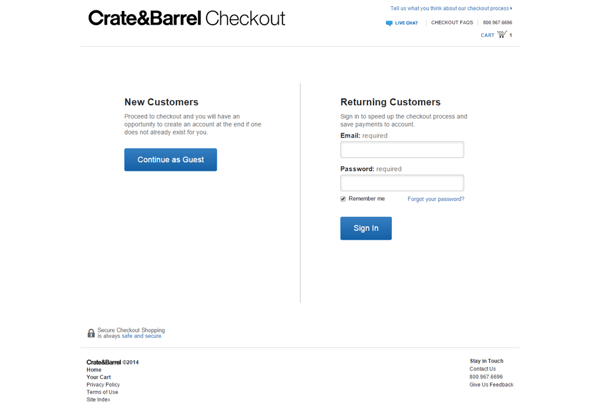
On the other hand, by offering guest checkout options, you’ll attract purchases from customers who don’t have accounts yet.
Lead your customers successfully through the check out process with short forms. This is once again a basic step you can take to ensure the checkout process isn’t unnecessarily lengthy. Make sure your checkout forms only require customers to provide the most essential information.
Allow for your customer’s shopping cart to stay active for at least a few hours, so they can pick up where they left off. The fact that someone left your store doesn’t always mean they won’t return in the future in search of the same items.
For example, maybe a shopper is browsing your store via their smartphone while waiting for an appointment with their doctor. If the doctor tells them the appointment is ready to begin, they’ll put their phone away, perhaps before completing a purchase. However, after their appointment is over, they might return to your store. They’ll be more likely to finish the checkout process if their shopping cart is still active.
Your shoppers need to find what they are looking for. If your store is not easy to navigate, your shoppers will walk away at the click of a button.
A site that’s easy to navigate shouldn’t bombard customers with too many images or content. You don’t want customers to get so overwhelmed by the various elements of your store that they struggle to find what they’re looking for on your site. It’s also important to ensure the process of accessing various pages in your store is as intuitive as possible.
Keep in mind that research indicates approximately half of all internet browsing occurs via mobile devices. Remember that when planning your site’s design, you want users to easily navigate it on both desktop and mobile devices.
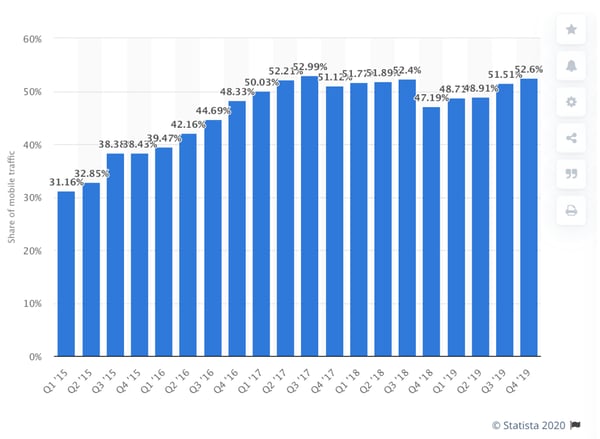
Research which payment methods your target customers prefer to use and provide it in your store. Some shoppers may want to pay via their credit or debit cards. Others might want to use a PayPal account or Apple Pay.
If a customer doesn’t have the option to pay via their preferred method, they may decide not to make a purchase at all. That’s much less likely to happen if they can pay the way they want to.
Improving your web development and UI design tactics is important if you want to optimize your conversion rate. However, you also need to ensure you’re marketing your brand and products effectively as well. The following key tips will help:
Product descriptions matter. If you’re still using copy that your product manufacturer provided, it could be losing you sales. Your product copy needs to be persuasive. Here’s how.
Considering the difference between features and benefits will help you write high-converting product copy. Features alone are boring. They merely tell potential customers what a product is or does. Benefits are the reason why features matter to your shoppers.
Be specific when writing product copy. Don’t merely tell shoppers an item is a “great product.” Describe why it’s a great product by highlighting specific benefits.
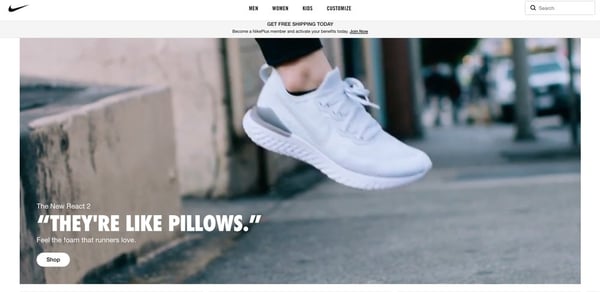
Maybe you’re selling a kitchen tool that allows users to complete a basic cooking step much more quickly than they could without the product. You would thus explain that helping users save time in the kitchen is one of the product’s most significant benefits.
Sensory words increase sales because they engage in more brain processing power. They make the reader experience the product copy while reading it.
Vague descriptors such as “excellent” and “amazing” don’t allow shoppers to clearly imagine why a product would be enjoyable or useful. Using sensory words helps you make a product feel more real in clear ways to shoppers.
Study the way companies market food items to get a better idea of how sensory words can improve product description copy. For example, an ice cream product description shouldn’t merely claim that an item on the menu is “delicious.” It should feature such words as “silky” or “Spring flavor.” This ensures customers will legitimately imagine how the item tastes.
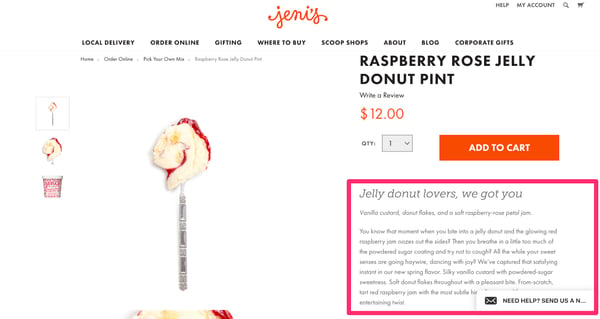
Make your return policy painless. The fact of the matter is, there will be instances when a customer decides they aren’t pleased with the item they received. Maybe it was damaged when it reached their home. Maybe they simply expected something different from the product based on its description.
Customers understand very well that they might want to return an item they purchase from your e-commerce store. Thus, if they’ve learned your return policy is fairly strict, they may not be inclined to place an order, believing they’ll struggle to make a return should they wish to do so.
At a minimum, your return policy should provide customers with 30 days to make returns, although you may want to extend this to 60 days to make your return policy more attractive.
It’s also important to simplify the process of making a return by including as few steps as possible and clearly explaining what those steps are in your return policy. Customers don’t merely want to know they’ll be able to make returns within a reasonable window of time. They also want to know that they’ll be able to do so easily.
Shoppers like to read reviews before they make a purchase. Incentivize customers to leave reviews by offering them a coupon. You might also consider automatically sending customers an email after they make purchases asking them to leave reviews.
Don’t overlook the potential value of this. Research shows 84% of consumers trust online reviews just as much as they trust recommendations from friends. If your products have more reviews, people browsing your shop will be more likely to buy them.
Install SSL, display security badges such as McAfee or GeoTrust. Customers want to know that their credit card information is safe.
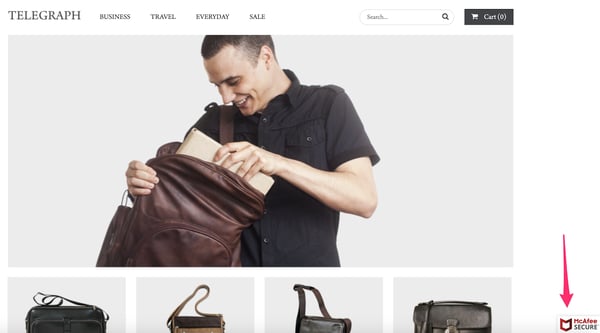
Just remember that it’s not enough to merely include safety features. You also need to be certain your customers actually know about them. With this in mind, you may want to include information both during the checkout process and on individual product pages explaining your site’s security features.
Effective marketing isn’t just about promoting your products and brand. It’s about promoting what you do to protect customers as well.
Remove uncertainty and gain trust by displaying your contact information. This is another way you can let customers know they’re dealing with a reputable company that won’t put them in any sort of financial danger.
For instance, a customer who has just found your store is likely to not be familiar with your brand. That means they can’t be certain you’re not going to scam them by accepting payment for items you never actually send. However, if they see that you’ve provided your contact information, they’ll know they can reach out to you directly if they have any problems after placing an order.
Shoppers love free shipping, and sometimes they are willing to wait longer for their purchases if they get it. In fact, 95% of consumers consider whether a company offers free shipping to be an important factor contributing to their decision to make a purchase.
An email newsletter can help you continue to market your products to new leads. It can also boost your odds of making future sales to customers who’ve bought items from your store in the past. However, email marketing can only deliver these benefits if your email list has subscribers.
Entice gaining subscribers by holding competitions. You can ask customers to sign up for your email list, letting them know that doing so will give them the opportunity to potentially win a prize.
You should also offer discounts to visitors who provide you with their email address. Of course, it’s important to send them beautifully crafted emails and ensure the tone and design are connected to your brand’s personality.
Not all of your customers will necessarily want to visit your site when buying your products. They may prefer to shop while also performing other tasks online.
Thus, you could provide a seamless shopping experience by allowing your customers to shop via social media platforms by making your Instagram profile Shoppable. This offers a degree of convenience that will lead to more sales.
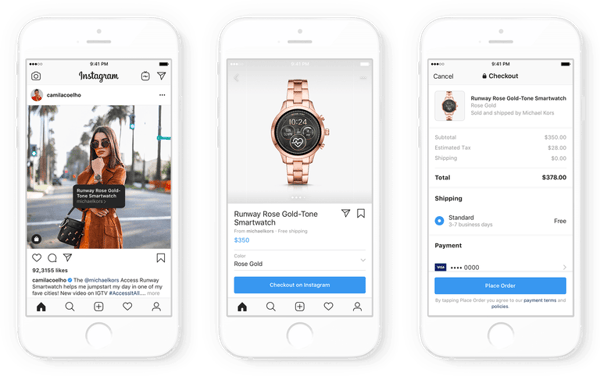
For maximum results, you need to grow your Instagram page so that it reaches a large audience. Do this by consistently posting to your account. Test what type of content works best with your followers. Once you know exactly what to post on Instagram and your follower count grows, they will turn into customers at a high conversion rate.
People want to see what they are purchasing. Make your products viewable from different angles and also allow your visitors the ability to zoom. Hire professionals to film high-quality product videos. Using videos to demonstrate what a product can do in cases where describing its features in text may not be clear enough.
It’s worth noting that if your products are available in multiple colors, display these colors in their own separate, high-quality images, just like the Shopify example below.
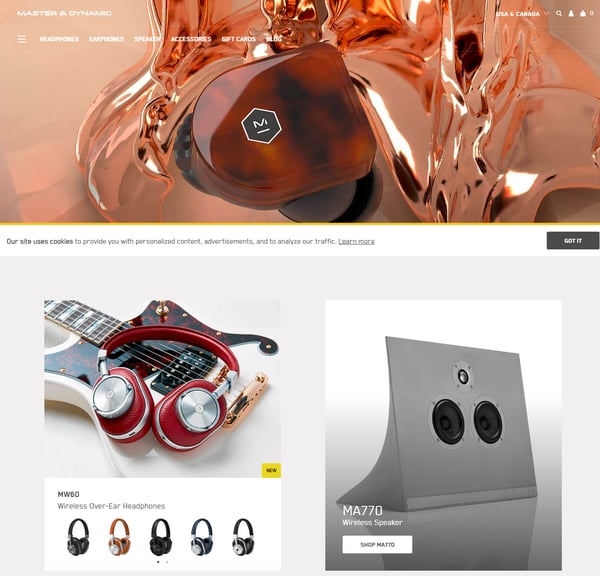
Sometimes shoppers may have trouble visualizing what a specific color looks like and having an image for each color will show them exactly what they will get.
You need to make sure you implement these CRO tactics correctly to see a rise in your conversion rates. Monitor your results to determine if they are providing positive results. Keep in mind that what may work for one e-commerce store may not work for yours. Luckily, by consistently following these tips, you’ll almost certainly see your store’s sales increase.
Michelle Deery is a content writer for Wishpond. She specializes in e-commerce and SaaS. The words she writes educates readers on how to convert visitors into paying customers. When she's not writing, Michelle loves to read, volunteer at her local dog shelter, and travel.
Designing real estate landing pages is your secret weapon to increase your conversions like a...
 by Marilia Dimitriou
by Marilia Dimitriou
Converting customers is like getting a second date.
 by Ninisha Pradhan
by Ninisha Pradhan
Even if you create the best products in the world, your e-commerce store will fail if you...
 by Mitt Ray
by Mitt Ray
Designing real estate landing pages is your secret weapon to increase your conversions like a...
 by Marilia Dimitriou
by Marilia Dimitriou
Converting customers is like getting a second date.
 by Ninisha Pradhan
by Ninisha Pradhan

